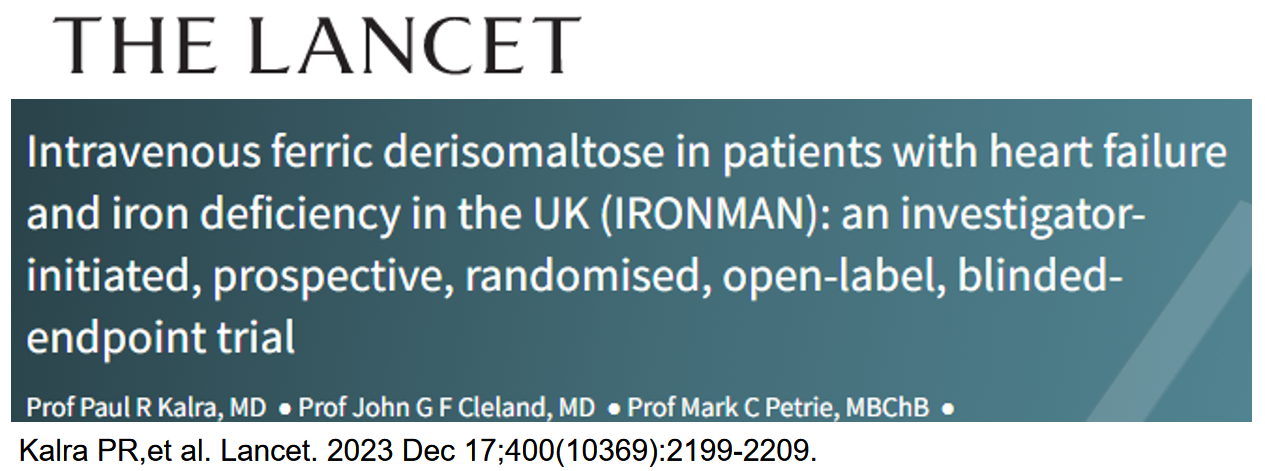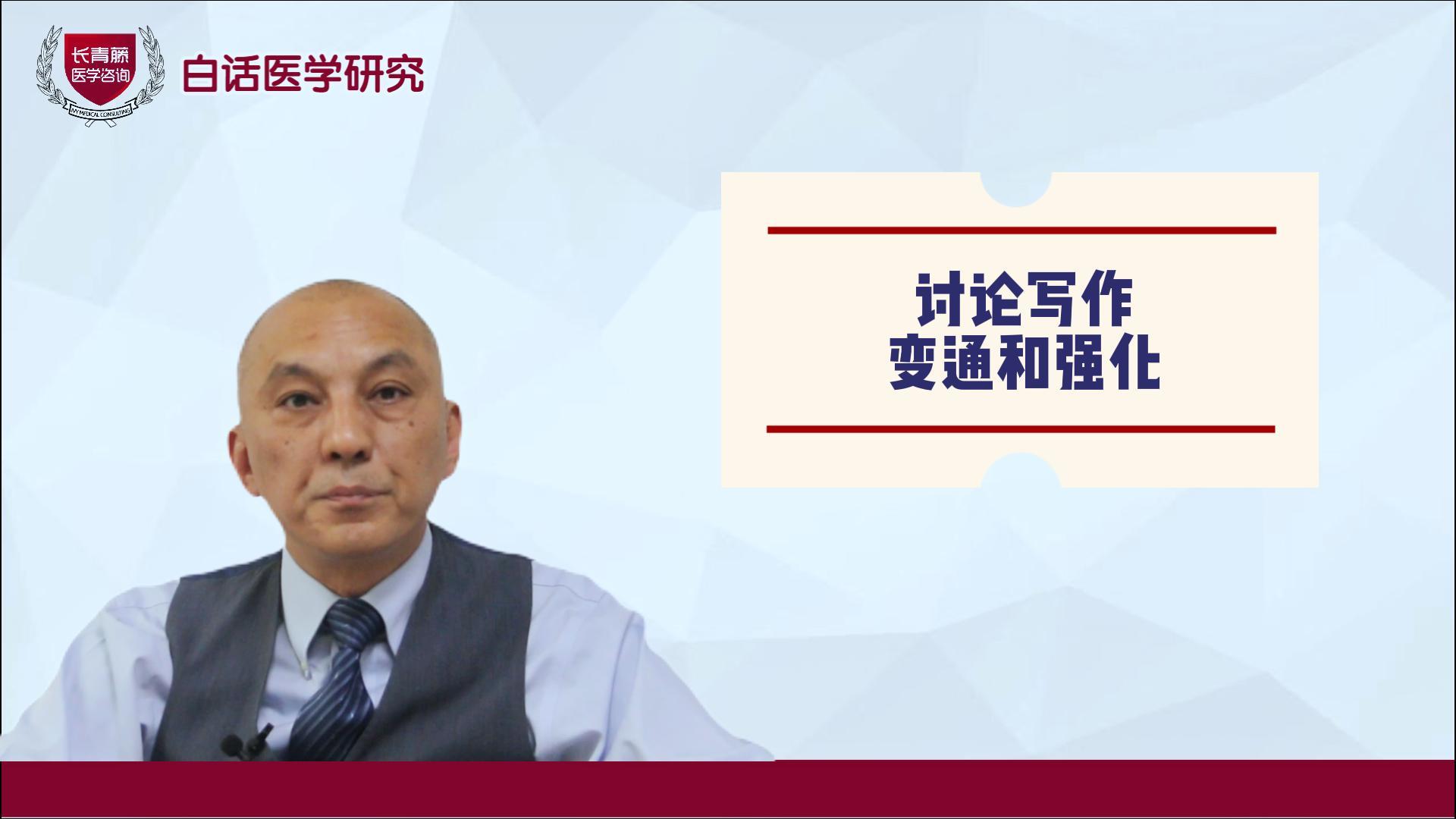2023-01-16


对于心力衰竭、左室射血分数降低和缺铁的患者,静脉注射羧麦芽糖铁可在短期内改善生活质量和运动能力,并减少心力衰竭住院人数达1年。我们旨在评估静脉注射去异麦芽糖铁对心力衰竭患者心血管事件的长期影响。
在2016年8月25日至2021年10月15日期间,对1869名患者进行了资格筛查,其中1137人被随机分配接受静脉注射去异麦芽糖铁(n=569)或常规治疗(n=568)。中位随访时间为2.7年(IQR为1.8 - 3.6)。常规护理组出现411个(27.5 / 100例患者-年)(比率比[RR] 0.82 [95% CI 0.66 ~ 1.02];p = 0·070)。,而常规护理组出现280个主要终点(每100例患者-年29.3个)(RR 0.76 [95% CI 0.58至1.00];p = 0·047)。由于感染导致的死亡或住院治疗在组间没有差异。
对于范围广泛的心力衰竭患者,左室射血分数降低和铁缺乏,静脉注射去异麦芽糖铁与较低的心力衰竭和心血管死亡入院风险相关,进一步支持铁补充在这一人群中的益处。
Abstract
Background: For patients with heart failure, reduced left ventricular ejection fraction and iron deficiency, intravenous ferric carboxymaltose administration improves quality of life and exercise capacity in the short-term and reduces hospital admissions for heart failure up to 1 year. We aimed to evaluate the longer-term effects of intravenous ferric derisomaltose on cardiovascular events in patients with heart failure.
Methods: IRONMAN was a prospective, randomised, open-label, blinded-endpoint trial done at 70 hospitals in the UK. Patients aged 18 years or older with heart failure (left ventricular ejection fraction ≤45%) and transferrin saturation less than 20% or serum ferritin less than 100 μg/L were eligible. Participants were randomly assigned (1:1) using a web-based system to intravenous ferric derisomaltose or usual care, stratified by recruitment context and trial site. The trial was open label, with masked adjudication of the outcomes. Intravenous ferric derisomaltose dose was determined by patient bodyweight and haemoglobin concentration. The primary outcome was recurrent hospital admissions for heart failure and cardiovascular death, assessed in all validly randomly assigned patients. Safety was assessed in all patients assigned to ferric derisomaltose who received at least one infusion and all patients assigned to usual care. A COVID-19 sensitivity analysis censoring follow-up on Sept 30, 2020, was prespecified. IRONMAN is registered with ClinicalTrials.gov, NCT02642562.
Findings: Between Aug 25, 2016, and Oct 15, 2021, 1869 patients were screened for eligibility, of whom 1137 were randomly assigned to receive intravenous ferric derisomaltose (n=569) or usual care (n=568). Median follow-up was 2·7 years (IQR 1·8-3·6). 336 primary endpoints (22·4 per 100 patient-years) occurred in the ferric derisomaltose group and 411 (27·5 per 100 patient-years) occurred in the usual care group (rate ratio [RR] 0·82 [95% CI 0·66 to 1·02]; p=0·070). In the COVID-19 analysis, 210 primary endpoints (22·3 per 100 patient-years) occurred in the ferric derisomaltose group compared with 280 (29·3 per 100 patient-years) in the usual care group (RR 0·76 [95% CI 0·58 to 1·00]; p=0·047). No between-group differences in deaths or hospitalisations due to infections were observed. Fewer patients in the ferric derisomaltose group had cardiac serious adverse events (200 [36%]) than in the usual care group (243 [43%]; difference -7·00% [95% CI -12·69 to -1·32]; p=0·016).
Interpretation: For a broad range of patients with heart failure, reduced left ventricular ejection fraction and iron deficiency, intravenous ferric derisomaltose administration was associated with a lower risk of hospital admissions for heart failure and cardiovascular death, further supporting the benefit of iron repletion in this population.
https://www.thelancet.com/journals/lancet/article/PIIS0140-6736(22)02083-9/fulltext
百度浏览 来源 : 医微客
版权声明:本网站所有注明来源“医微客”的文字、图片和音视频资料,版权均属于医微客所有,非经授权,任何媒体、网站或个人不得转载,授权转载时须注明来源:”医微客”。本网所有转载文章系出于传递更多信息之目的,且明确注明来源和作者,转载仅作观点分享,版权归原作者所有。不希望被转载的媒体或个人可与我们联系,我们将立即进行删除处理。 本站拥有对此声明的最终解释权。




发表评论
注册或登后即可发表评论
登录注册
全部评论(0)